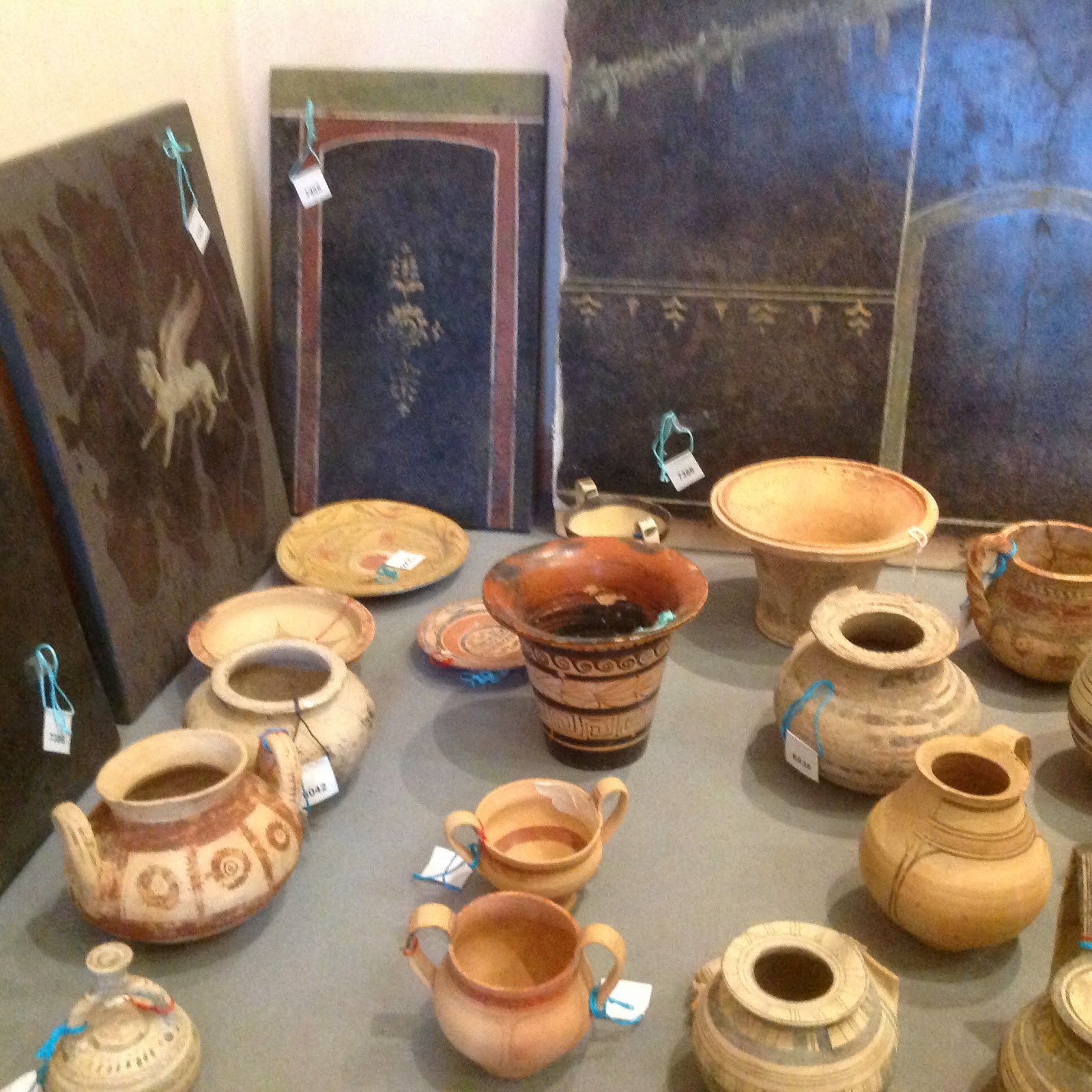Wednesday, January 21, 2015 -  Becchina,Becchina archive,Carabinieri Art Squad,Carabinieri Tutela Patrimonio Culturale,Christo Michaelides,giacomo medici,Gianfranco Becchina,Robert Hecht,Robin Symes
Becchina,Becchina archive,Carabinieri Art Squad,Carabinieri Tutela Patrimonio Culturale,Christo Michaelides,giacomo medici,Gianfranco Becchina,Robert Hecht,Robin Symes
 No comments
No comments
 Becchina,Becchina archive,Carabinieri Art Squad,Carabinieri Tutela Patrimonio Culturale,Christo Michaelides,giacomo medici,Gianfranco Becchina,Robert Hecht,Robin Symes
Becchina,Becchina archive,Carabinieri Art Squad,Carabinieri Tutela Patrimonio Culturale,Christo Michaelides,giacomo medici,Gianfranco Becchina,Robert Hecht,Robin Symes
 No comments
No comments
Once Upon a Time in Five Secure Vaults in Switzerland
By Lynda Albertson, ARCA CEO
ARCA’s blog readers have followed the cases of Italian antiquities trafficking for practically as long as there has been an ARCA blog. Antiquities dealers, suspected of art crimes with names like Giacomo Medici, Robin Symes, Robert Hecht, Christo Michaelides, and Gianfranco Becchina are names you can search on and who each have pages of blog posts dedicated to them.
ARCA’s blog readers have followed the cases of Italian antiquities trafficking for practically as long as there has been an ARCA blog. Antiquities dealers, suspected of art crimes with names like Giacomo Medici, Robin Symes, Robert Hecht, Christo Michaelides, and Gianfranco Becchina are names you can search on and who each have pages of blog posts dedicated to them.
For those that want to delve further, books like The Medici Conspiracy and Chasing Aphrodite give English language accounts of the cases and investigations surrounding these dealers and for those who read Italian, Fabio Isman’s multi-year investigation I predatori dell’arte perduta explains why Italy has fought so hard to have its stolen antiquities returned home.
But in the background of all this, were the artworks themselves; artwork large and small, artworks looted and sold, and artworks looted and almost sold, had it not been for the quick thinking of investigators who diligently worked, in some cases for years, to put the pieces of this one puzzle together.
 Those who have worked on these cases know how hard it is to identify suspect antiquities, especially when snapped on crumpled Polaroids. Matching smashed pot fragments in photos taken in a darkened basement or the boot of a car with professional-quality photos of finally restored masterpieces on sale in auction catalogs takes a sharp eye. More than that, it takes a considerable amount of patience, cooperation and collaboration with legal and law enforcement authorities to bring these articles home.
Those who have worked on these cases know how hard it is to identify suspect antiquities, especially when snapped on crumpled Polaroids. Matching smashed pot fragments in photos taken in a darkened basement or the boot of a car with professional-quality photos of finally restored masterpieces on sale in auction catalogs takes a sharp eye. More than that, it takes a considerable amount of patience, cooperation and collaboration with legal and law enforcement authorities to bring these articles home.
How did these objects get from an unknown archaeological site to a middleman? Who were the individual tombaroli? Who were the intermediaries who physically transported these objects to dealer warehouses in Switzerland? Why were museums and art collectors so quick to turn a blind eye to these objects' lack of collection history? All of these are questions we may never be able to fully answer, but which have been speculated on in minute detail.
What maybe hasn’t been examined, or at least not in such a visually dramatic way is the amount of work behind this laborious investigation. The work of the Carabinieri TPC, the work of Italy’s state prosecutors and expert consultants, and the work of Italy’s Ministry of Culture. But instead of trying to tell their story in this blog post, perhaps its best to let photos of what they have recovered speak for themselves.
The imagery you see here comes from one singular organized crime investigation presented today at the National Roman Museum at The Baths of Diocletian (Museo Nazionale Romano alle Terme di Diocleziano).
5,361 archaeological objects, each ripped from their context, giving us no known site of origin to tell us about the place where they were taken from. The objects date from the eighth century BC to the third century AD., all looted, all displayed together in one place.
Each piece represents an artwork stolen from Campania, Lazio, Calabria, Puglia, Sicily or Sardinia.
One trafficking enterprise. How many more are there?
Note: The accompanying photographs and video in this blog post represent approximately half of the 5,361 antiquities confiscated in Basel, Switzerland in 2001 as part of Operation Teseo. Italy’s court reached its final and lasting verdict of confiscation via the Italian Supreme Court in 2013, which was then validated and confirmed by Switzerland. These objects have been in Italy since 2004 and do not represent a “new” seizure as has been indicated by some journalists not familiar with the cases history. The antiquities on display during the press conference are objects well known to researchers in the field of Italian antiquities looting and have been held as part of the ongoing investigation in Rome so that researchers and investigators had access to them as part of the investigation and for cataloging purposes.
The collection may gone on temporary display in Italy as a group but will then be disbursed to museums in the regional areas where the objects were likely looted.
The collection may gone on temporary display in Italy as a group but will then be disbursed to museums in the regional areas where the objects were likely looted.







































